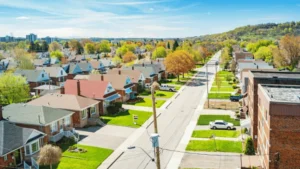
The pre-construction phase is a critical period where planning and preparation take place, setting the stage for the actual building process. This phase, influenced by various factors, determines the project’s trajectory in terms of its feasibility, design, and eventual success.
Understanding the dynamics of project complexity and size, regulatory environment, stakeholder coordination, financing and budget constraints, and the necessity for design revisions is essential for appreciating the intricacies involved in this phase. Each of these elements plays a distinct role, shaping the duration and efficiency of pre-construction and, thus, the overall success of the construction project. So how long does pre construction take?
Project Complexity and Size
The complexity and size of a project are among the most significant factors that influence the duration of its pre-construction phase. Larger and more intricate projects inherently require more detailed planning and coordination, extending the timeline of pre-construction activities. Complexity can stem from various aspects, such as the architectural design, the engineering challenges involved, the integration of advanced technologies, and the need for specialized materials or construction methods. Larger projects, such as skyscrapers, large commercial complexes, or extensive infrastructure developments, also demand extensive feasibility studies, more comprehensive budgeting, and intricate logistical planning.
Each of these steps becomes more complex and time-consuming as the scale of the project increases. For instance, a high-rise building in an urban area may face unique engineering challenges, necessitate thorough environmental impact assessments, and require intricate coordination with multiple stakeholders and regulatory bodies. Similarly, a project covering a vast area may need detailed site surveys and more complex resource management strategies. Therefore, the greater the complexity and size of a project, the longer the pre-construction phase typically takes, ensuring that every potential challenge is anticipated and adequately planned for to facilitate a smooth construction process.
Key Elements of the Regulatory Environment
Zoning Laws and Land Use Regulations
These dictate how a piece of land can be used. Projects often need to seek approvals if their planned use deviates from existing zoning laws, which can be a time-intensive process involving public hearings and modifications to meet compliance.
Building Codes and Safety Standards
Compliance with local and national building codes, which cover aspects like structural integrity, fire safety, and accessibility, is mandatory. Ensuring that designs and plans meet these codes can require revisions and additional review time.
Environmental Regulations
Environmental impact assessments are crucial, especially for large projects. This involves evaluating the project’s effect on local ecosystems, water sources, and overall environmental quality. Obtaining the necessary environmental clearances can be a lengthy process, particularly if the project has significant environmental implications.
| Did you know? The energy efficiency of new homes has improved by 66% since 1975. |
Historic and Cultural Preservation
In areas with historical or cultural significance, additional approvals may be required to ensure that construction does not negatively impact heritage sites or culturally important landscapes.
Permitting Process
The process of obtaining construction permits can be lengthy, especially in regions with a bureaucratic permitting process. Delays can occur due to the need for multiple permits, each with its own set of requirements and review process.
Stakeholder Coordination
Stakeholder coordination is a vital and intricate component of the pre-construction phase in construction projects. It involves managing a diverse array of individuals and groups, each with a vested interest in the project. This group includes but is not limited to project owners, investors, community representatives, regulatory authorities, contractors, architects, and engineers. The key to successful stakeholder coordination lies in establishing effective communication and collaboration channels.
Ensuring that all parties are aligned in terms of project objectives, timelines, and expectations is crucial. Decision-making is another significant aspect, as decisions regarding design, budgeting, and contractor selection are made during this phase. The involvement of multiple stakeholders can often complicate and prolong these processes. Each stakeholder may have different priorities and concerns, and reconciling these to reach a consensus can be time-consuming. Regular meetings, transparent communication, and efficient conflict-resolution strategies are essential for maintaining project momentum.
Stakeholder coordination also extends to securing necessary approvals and feedback, which is especially critical when dealing with regulatory bodies and community groups. Delays in obtaining approvals or in reaching agreements can significantly extend the pre-construction timeline. Moreover, the more stakeholders involved, the greater the need for meticulous planning and management to ensure that all viewpoints are considered and that the project progresses smoothly. The effectiveness of stakeholder coordination during pre-construction not only affects the timeline but also has a profound impact on the overall success and smooth execution of the construction project.

Financing and Budget Constraints
Securing the necessary funding often presents the first major challenge, requiring extensive negotiations with banks, investors, or other financial institutions. This process can be time-consuming, as it involves presenting detailed project plans, feasibility studies, and financial projections to potential financiers. Furthermore, establishing a comprehensive and realistic budget is a complex task that necessitates a thorough understanding of all potential costs, including materials, labour, permits, and contingencies.
Budget constraints can lead to revisions in project scope or design, further extending the pre-construction timeline. The intricate balancing act of securing sufficient funds while adhering to a strict budget is crucial for the smooth progression of the project. Any miscalculations or oversights in this stage can lead to financial difficulties later on, potentially jeopardizing the entire project. Thus, effective management of financing and budgetary aspects is not only essential for kickstarting the project but also for ensuring its successful completion within the projected costs and timeframes.
| Did you know? Total investment in building construction in Canada was worth $19.8 billion in October 2023. |
Design Revisions
Design revisions during the pre-construction phase of construction projects significantly impact the project’s timeline and development. These revisions, which can range from minor tweaks to major overhauls, are often necessitated by various factors such as client feedback, budget adjustments, regulatory compliance, or practical construction considerations. For instance, clients might request changes to the initial designs to better align them with their vision or functional needs, which can lead to a series of modifications.
Budget constraints are another common driver for design changes; if the initial plan proves too costly, revisions are made to align the design with financial realities. Additionally, ensuring compliance with local building codes and regulations often requires adjustments to the original design. These regulations might dictate changes in materials, structural design, or environmental impact measures. Moreover, practical considerations related to the construction process, such as the availability of materials or the feasibility of certain architectural features, can also necessitate design changes.
Each round of revisions entails a thorough review and approval process, adding time to the pre-construction phase. The need for multiple stakeholders’ input and agreement on these revisions further extends this timeframe. Thus, design revisions, while crucial for achieving the desired outcome, can considerably lengthen the pre-construction period, underscoring the importance of detailed planning and effective communication among all parties involved.
Conclusion
The pre-construction phase is a multifaceted and critical stage in the lifecycle of a construction project, with its duration heavily influenced by a range of key factors. These include the complexity and size of the project, the regulatory environment, stakeholder coordination, financing and budget constraints, and the necessity for design revisions.
Each of these elements interplays to shape not only the length of the pre-construction phase but also the overall success and efficiency of the project. Understanding and adeptly managing these aspects are crucial for ensuring that the project progresses smoothly from its conceptualization to the commencement of actual construction. This phase, while challenging, sets the foundation for a well-planned and executed construction project, ultimately determining its success and longevity.





